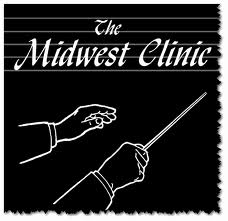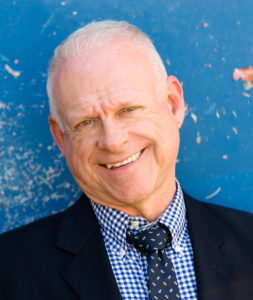 Today is my last full day here at the Midwest, and it was another day full of great events.
Today is my last full day here at the Midwest, and it was another day full of great events.
I started the day with breakfast with my dear friend Scarlett O’Hara – yes, it is really her name – well, her maiden name. I have known Scarlett from my days as a 20-something free spirit in the days before Northern Valley. It is a singular joy to sit down with a friend who you have known over 30 years, and just pick up where you left off. Thanks, Scarlett, for a wonderful morning!
Moving on to the convention itself, I took a swing through Shattinger’s Music. It really is fun to look through the stacks of new music, but I had no plan for anything specific, and when that happens, I simply feel overwhelmed. Quite by accident, I wandered into Manhattan Beach Music, and found Michael Markowski. I really enjoy the opportunity meeting and chatting with composers, so this was suited me quite well. We talked briefly about my groups, and he made some recommendations. He handed me an iPod, and I sat down on of the couches with the scores and settled in. I found that I am very interested in his Turkey in the Straw, Shine, and Shadow Rituals.
I checked in with Brian Worsdale one more time at the French Woods booth, left the exhibits, and headed for the first of two exceptional concerts of the day. The first was the Lakota West High School Symphonic Winds, from West Chester, Ohio. This was the third Midwest Clinic performance for Lakota West.Some of the programmed works included:
- Precision March, by Harold Bennett (aka Henry Fillmore) – a particularly unique march, arranged by Larry Clark
- Quintessence II, by David Gillingham – extremely difficult work, which featured a solo brass quintet and a solo percussionist, who had to play marimba, timpani, and two separate multi-percussion setups
- Cumberland Falls Overture, by Brant Karrick – great tonal colors throughout
- National Hymn “God of Our Fathers” – featured the audience standing to sing one stanza of this hymn plus two antiphonal brass choirs
As a clarinetist, I have always found stopped horn to be confusing. So I was glad to see that James Boldin was presenting a clinic on this topic. I learned that there really are two similar, yet contrasting, principles at work when you stop a horn. Watch his YouTube demonstration to understand how this works. I feel better “armed” to deal with this unusual but important technique now.
The next clinic, with Gregg Gausline, was coded “Generation Next,” for new teachers, but I saw plenty of veteran teachers there – and it was packed with people sitting and standing in the aisles. His clinic, “10 Gems for Great Rehearsals,” focused on 10 simple and straight-forward methods for getting the most out of every moment with the ensemble. I love this kind of clinic, that reminds me of things I already know, but shifts my perspective to achieve better results.
Lastly, I attended the L.V. Birkner High School Symphonic Band 1 concert. This particular district has sent 15 ensembles during the 65 years of the history of the conference. It is an exceptional program, with a 300+ member marching band, 5 concert bands, adjunct studio instruction during the school day, and a long history of superior performances at TMEA events. The program included:
- The premiere performance of the first movement of the Hindemith Symphony in E-flat, transcribed by R. Mark Rogers
- San Antonio Dances, by Frank Ticheli – programmed for WSW at the ACB convention
- Carnival of Venice, arranged by Del Staigers – two additional variations were added by soloist Allen Vizzutti, who played with an unequaled dynamic flare. He closed with an encore of one variation, where he rotated the trumpet while playing, and this was the double-melody variation, mind you! At the end, he tossed his instrument in the air, caught it, and continued to play until the final bar!
- Premier performance of Animas Luminis, by Wataru Hokoyama – commissioned by the Midwest Clinic to honor the wounded souls in Japan affected by the devastating earthquakes and tsunamis which took place on March 11, 2011
- See Rock City, by Brant Karrick – which fused element of rock, jazz, and funk into a high-energy finale, honoring the “Rock City” attraction atop Lookout Mountain near Chattanooga, Tennessee.
It was an exciting and busy conference. I’m eager to put a lot of these ideas into practice, and share them with as many of you as I can.



Recent Comments